The episode’s final ‘preppers’ (and we’re using that term lightly here) are Mike Umberger and Grayson Smith of Maryland.

I guess they were hoping to get some publicity for skateboarding?
Mike is apparently a former Navy MP and Grayson is a…former Zen-Buddhist monk? There’s a lot of focus on how the guys seem like ‘polar opposites’, but that’s really just the angle the producers are spinning for drama. Ignore it.
Really, just be glad we’re seeing Young People with Little Money on the show for once, instead of the usual Middle-Aged-Guys With More Money Than Sense.
The show tries to pass them off as ‘slackers’–although that really hasn’t been a valid label since about 1995.
Their supposed fear is of a Third World War, which they describe by getting creative and actually giving specifics!: they predict that “by 2017, the Chinese will have cemented their place as the world’s superpower, and will quickly blockade the US&A”—something to do with too much of our food being imported instead of grown at home? At least it’s a novel idea!
And if you’re worried about blockading Chinese cutting off your foodstuffs, the smart thing to do isn’t to drop a couple grand on one-time-only foodbuckets *coughWiseCompanycough*, but to set yourself up to grow as much of your food as possible. And that’s exactly what these guys are starting to do: one of their fathers owns 100 acres, and so they’ve moved out of the city (which is a good move in itself) and started to farm it in their own way.
Right off the bat, Grayson and Mikelet us know that they’re “not looking to be traditional farmers”. Now, normally when people say they’re into ‘traditional’ things, that’s usually code for ‘old-timey’—which often happen to translate well into self-reliance (think blacksmithing, spinning, basketweaving, butter-churning, &c.
Here, the opposite is meant: when the guys say they don’t want to be traditional farmers, what they’re really saying is that they don’t want to keep Our Culture’s oldest tradition, totalitarian agriculture!
Hmm, what a novel idea! Says the average viewer: “But why would these bright young men not want to associate themselves with the most productive agricultural paradigm ever devised?”
I dunno, maybe because that approach has never been sustainable?, and because its current iteration amounts to little more than throwing petroleum and ‘natural gas’ (which, by the way, is a bullshit greenwashed term anyway—it’s fucking methane!) onto our fields to grow three main monocrops, all resulting in everything from topsoil loss and soil compaction, to eutrophication, loss of fertility, and greatly-reduced biodiversity? All of these translate to fundamental unsustainability. Especially given the fact that global petroleum production has likely already peaked, why we continue to operate under this model is beyond me. Well, it’s not really beyond me—I know exactly why we continue to do it, but the root causes are about eight thousand years old, and most folks these days seem to have trouble comprehending anything past about 50 years ago.
The dudes admit they’re different from most farmers another way: they don’t want to be part of the grid. There they go, using their brains again! Says the average viewer, “But why would they want to remove themselves from the most glorious organization of shelter, heating, cooling, electricity, water, and sanitation, again, ever devised?”
Perhaps because such wonders of the modern age are again, completely reliant on unsustainable nonrenewable resources (coal, petrol, propane, natural gas methane) and painfully indicative of Our culture’s belief in the One Right Way to Live? If you don’t believe me, why else do we build living structures that are identical (and identically connected to the Grid) whether in Arizona or Alaska? When did we exchange regional diversity for cheap two-by-four stickframing, drywall, and vinyl siding? (answer: probably around 1492, when White people showed up on the scene and set about replicating their beloved England/Spain/France, which required extirpating all the indigs and their pesky regional adapted-to-specific-environments lifestyles).
So yeah, Grayson and Mike intend to turn the traditional farm into a self-sufficient one. Exactly!, because sustainable/self-reliant living is real preparedness! Unfortunately, we’re seeing their self-sufficient farm project in its infancy, so they’re still taking baby steps. But hey, baby steps are better than none!:
To start out, we actually get to see them put together a COLDFRAME!
For you non-green-thumb’ed folks, a coldframe is basically a mini-greenhouse—a sun-warmed, glass-topped container that usually translates into about an extra month of growing time before and after the main season. They’re handy as hell.
Better yet, Grayson declares his bias when gathering building materials—“free is better!” WORD. A society that believes everything must be ‘new’ is one destined for failure (oh hey look, here we are!).
I also like the water-filled wine bottles—for thermal mass/solar radiators—that they stick in the ground inside the coldframe. That’s a good trick; I might have to steal that idea and implement it into my coldframe.
And it just keeps getting better, because HOLY SHIT, not only did the narrator actually say PERMACULTURE, but they even got a captioned definition!! This might just be a miracle—one of the most unenlightening shows on what has become a channel of regrettable, sensationalist programming actually gave its average viewers a like, 30-second glimpse of something actually worth learning about! I just wish they’d done it sooner on an earlier episode, because folks watching this might get confused and think that permaculture-in-action looks like gray, unproductive farmland.

It doesn’t.
But that land won’t be unproductive for long, because it just keeps getting even better, when they wheel out the CHICKEN TRACTOR!!! Grayson explains the genius of these moveable coops, which allow the birds to eat bugs (pest control/less feed to buy), scratch up (aerate) soil, and defecate (fertilize!) everywhere! If you move the tractor every day, pretty soon you wind up with light, fertile, bug-free soil, which is exactly what you want if you’re looking to grow all your own food.
Unfortunately, the producers apparently weren’t content with educating average visitors with three fantastic items of self-reliant living, and felt the need to remind us that we’re watching Doomsday Preppers. And so, for the mandatory producer-enforced stunt, the guys head into the woods to set up spikey booby traps to catch watermelons!

Yeah. It’s especially sad when you think about what they could have filled that time with—maybe the guys could have shown off their properly-carbon/nitrogen-balanced compost pile, or waterless humanure setup, or root cellar—who knows??
Being new transplants (gardening pun?) to the area, the guys throw a barn party, to meet their neighbors (building community is a huge part of offgrid living that we rarely hear about) and I guess maybe recruit folks, because let’s fact it—with 100 acres, these guys have all the ingredients for a kickass intentional community. There’s a Jack White-looking guy in a fur coat and derby hat at the gig, so I guess the producers told attendees to dress as outlandishly as possible?, because hey, let’s make sure nobody takes millennials seriously.
The experts give them just 51 points for five months’ initial survival. Ugh, experts: first off, these dudes aren’t even real ‘preppers’;
therefore, the form their ‘preparedness’ takes results from their operating on a completely different paradigm from the one the scoring system is designed to evaluate;
And finally: everyone has to start somewhere. If NatGeo sends a film crew back to their homestead in two or three years, I bet we’ll see some serious off-grid organic horticultural goodness. Best of luck, dudes!
Some content on this page was disabled on 20 August, 2021 as a result of a DMCA takedown notice from Ingrid Bearpark. You can learn more about the DMCA here:
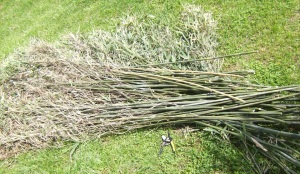
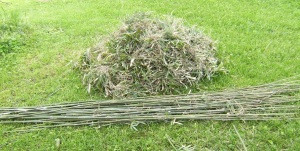
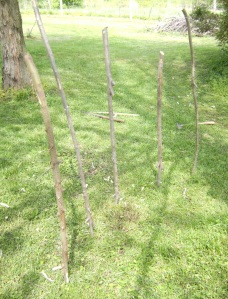
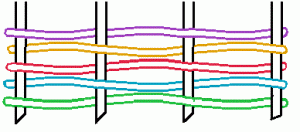
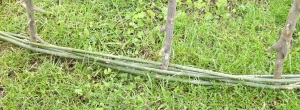
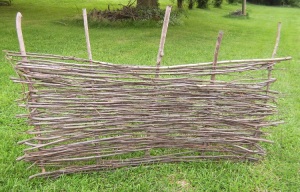
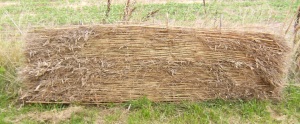
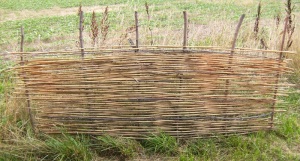
 Unlike the rest of the one-name-only folks on the show (whose full names can be dug up in about five seconds), these guys have a minimal web footprint, and so while I only know their last name through personal correspondence, I’ll be maintaining their privacy in this post. If you really want to get ahold of them, the contact form at
Unlike the rest of the one-name-only folks on the show (whose full names can be dug up in about five seconds), these guys have a minimal web footprint, and so while I only know their last name through personal correspondence, I’ll be maintaining their privacy in this post. If you really want to get ahold of them, the contact form at 
 In fact, about the only foodstuffs they still buy are things they can’t grow in their climate: bananas, sugar, and coffee. They also keep a nice variety of livestock, including a Jersey cow for milk, fourteen dairy goats (the ultimate survival animal), plus a number of chickens. Between all those critters and meat donations from hunting relatives, the family hasn’t had to buy meat in years (“and we probably wouldn’t eat what’s in the supermarket, anyway,” Joe said).
In fact, about the only foodstuffs they still buy are things they can’t grow in their climate: bananas, sugar, and coffee. They also keep a nice variety of livestock, including a Jersey cow for milk, fourteen dairy goats (the ultimate survival animal), plus a number of chickens. Between all those critters and meat donations from hunting relatives, the family hasn’t had to buy meat in years (“and we probably wouldn’t eat what’s in the supermarket, anyway,” Joe said).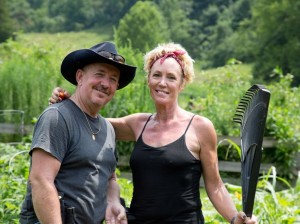 These two have years of experience as emergency responders and firefighter medics, including dealing with a rioting, looting, panicked populace in the aftermath of Hurricane Katrina. In the years since that storm, they cashed in their pensions and moved from Florida to 41 acres of rolling land in the hills of Virginia. Apparently they paid for the land and house in cash, which means no mortgage, no debt, no bank constantly threatening to take back their property.
These two have years of experience as emergency responders and firefighter medics, including dealing with a rioting, looting, panicked populace in the aftermath of Hurricane Katrina. In the years since that storm, they cashed in their pensions and moved from Florida to 41 acres of rolling land in the hills of Virginia. Apparently they paid for the land and house in cash, which means no mortgage, no debt, no bank constantly threatening to take back their property. These ‘urban homesteaders’ run the
These ‘urban homesteaders’ run the